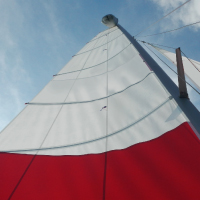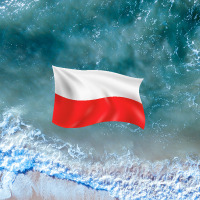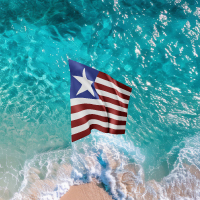
Recommended contact person
Introduction
The EU Recreational Craft Directive (“RCD”) is a critical piece of legislation within the European Union (EU) that governs the design, manufacture, and sale of recreational watercraft. Since its introduction, the RCD has played a vital role in ensuring that boats and other recreational craft placed on the EU market meet specific safety, environmental, and technical standards. This article aims at exploring RCD’s origins, its’ scope and significance, as well as its impact on the shipping industry and the future plans for its evolution.
Background and Origins of the Recreational Craft Directive
The RCD was first introduced by the European Union in 1994 as Directive 94/25/EC, with the aim of harmonizing the regulations concerning recreational craft across all member states. Prior to the RCD, there was a patchwork of national regulations within the EU, creating barriers to trade and inconsistencies in safety and environmental standards. The RCD sought to address these issues by providing a unified framework that manufacturers, importers, and distributors could follow, thereby facilitating smoother trade within the single market while ensuring a high level of safety and environmental protection.
The RCD was updated in 2003 by Directive 2003/44/EC to include additional requirements, particularly concerning exhaust and noise emissions. The most recent version of the RCD, Directive 2013/53/EU, came into force on January 18, 2016. This latest iteration has expanded the scope of the directive and introduced more stringent environmental and safety requirements in response to growing concerns about environmental sustainability and the need for more comprehensive consumer protection.
Scope and Coverage of the Recreational Craft Directive
The RCD applies to a wide range of recreational watercraft, including motorboats, sailing boats, personal watercraft (such as jet skis), and certain components that are sold separately. Specifically, the directive covers:
- Recreational Craft – Any boat intended for sports and leisure purposes with a hull length of 2.5 to 24 meters. This includes both motorized and non-motorized craft, with the exception of those used for racing purposes, canoes, kayaks, gondolas, pedalos, surfboards, and other small craft.
- Personal Watercraft – Watercraft designed for use by individuals or small groups, such as jet skis, that use an internal combustion engine to propel themselves through water.
- Partly Completed Boats – Boats that are sold incomplete, with the intention that they will be finished by the end-user or a third party.
- Components – Essential safety components that are placed on the market separately, including steering wheels, fuel tanks, engines, and engine fittings.
- Engines – The directive includes provisions for propulsion engines used in recreational craft, setting limits on exhaust emissions and noise levels to reduce environmental impact.
Key Requirements and Standards under the RCD
The RCD outlines a series of essential requirements that manufacturers must meet to ensure their products can be sold within the EU. These requirements cover several key areas:
Safety
The RCD imposes strict safety standards to protect users of recreational craft. This includes requirements related to stability, buoyancy, handling, and maneuverability. The directive also covers aspects such as fire protection, emergency escape routes, and the structural integrity of the craft.
Environmental Protection
One of the core objectives of the RCD is to minimize the environmental impact of recreational craft. This includes limits on exhaust emissions from engines (such as carbon monoxide, hydrocarbons, and nitrogen oxides) and restrictions on noise levels. These measures are designed to reduce pollution and protect aquatic ecosystems.
Construction and Design
The directive sets out technical standards for the construction and design of recreational craft. This includes requirements for the materials used, the design of hulls and superstructures, and the installation of essential components. The goal is to ensure that all craft are constructed to a high standard, reducing the risk of accidents and increasing the longevity of the products.
Compliance and Certification
To place a recreational craft on the EU market, manufacturers must demonstrate that their products comply with the RCD’s requirements. This involves a conformity assessment process, which can vary depending on the complexity and potential risks associated with the craft. Manufacturers can choose from several modules for demonstrating conformity, ranging from self-certification to third-party verification by a notified body.
Marking and Documentation
Once a product is certified, it must be marked with the CE marking (the CE Classification), indicating that it meets all applicable EU requirements. Additionally, manufacturers must provide comprehensive documentation, including a Declaration of Conformity and user manuals in the language(s) of the country where the product will be sold.
Importance of the Recreational Craft Directive
The RCD is important for several reasons, including the ones mentioned above, such as Consumer Safety and Environmental Protection, but also for:
- Harmonization of Standards – By providing a unified framework of standards and requirements, the RCD facilitates the free movement of goods within the EU. This reduces the administrative burden on manufacturers and importers, as they no longer need to go through complex national regulations.
- Market Access – Compliance with the RCD is a prerequisite for placing recreational craft on the EU market. This ensures a level playing field for manufacturers and gives consumers confidence that the products they purchase meet stringent safety and environmental standards.
- Innovation and Competition – The RCD encourages innovation by pushing manufacturers to develop new technologies and designs that meet the directive’s requirements. This has led to advances in engine technology, materials science, and design, benefiting both consumers and the environment.
To Whom the RCD Applies
The RCD applies to a broad range of stakeholders within the recreational craft industry including:
- Manufacturers: The primary responsibility for compliance with the RCD lies with manufacturers. They must ensure that their products meet all applicable standards and undergo the necessary conformity assessments. Manufacturers must also maintain technical documentation and provide instructions for safe use.
- Importers: Importers who bring recreational craft or components from outside the EU into the single market are also subject to the RCD. They must ensure that the products they import comply with the directive and are properly marked with the CE marking.
- Distributors: Distributors who sell recreational craft within the EU are required to verify that the products they offer comply with the RCD. This includes checking that the craft bear the CE marking and are accompanied by the necessary documentation.
- Notified Bodies: Notified bodies are independent organizations designated by EU member states to carry out conformity assessments. Manufacturers may work with notified bodies to verify that their products meet the RCD’s requirements, particularly in cases where third-party certification is required.
- End-Users: While the RCD does not directly apply to end-users, it ultimately benefits consumers by ensuring that the recreational craft they purchase are safe, environmentally friendly, and built to a high standard.
Future Plans and Developments in the EU
The RCD is a living document, subject to periodic review and revision to address emerging challenges and incorporate new technologies. Looking to the future, several trends and developments are likely to shape the evolution of the RCD:
Sustainability and Environmental Standards
As the EU continues to prioritize environmental sustainability, future revisions of the RCD are likely to include even stricter limits on emissions and noise levels. There may also be increased emphasis on the use of sustainable materials and the circular economy, encouraging manufacturers to design products that are easier to recycle and have a lower environmental footprint.
Digitalization and Smart Technologies
The rise of digital technologies and the Internet of Things is likely to influence the future of recreational craft. This could lead to new requirements for cybersecurity, data protection, and the integration of smart technologies into recreational craft. The RCD may evolve to address these challenges, ensuring that new technologies are safe and secure.
Harmonization with Global Standards
As global trade continues to expand, there may be efforts to harmonize the RCD with international standards. This could facilitate trade with non-EU countries and reduce the regulatory burden on manufacturers who operate in multiple markets.
Safety Enhancements
Future revisions of the RCD may include new safety requirements, particularly in response to emerging risks. This could include enhanced standards for fire safety, stability, and emergency equipment, ensuring that recreational craft continue to meet the highest safety standards.
Impact of Brexit
The UK’s departure from the EU has introduced some complexities in the regulatory landscape for recreational craft. While the UK has retained many of the RCD’s provisions in its domestic legislation, future divergence between UK and EU standards could create challenges for manufacturers and importers operating in both markets.
Conclusion
The Recreational Craft Directive is a cornerstone of the EU’s regulatory framework for recreational watercraft. By setting high standards for safety, environmental protection, and design, the RCD ensures that consumers can enjoy recreational boating with confidence, while also safeguarding the environment. As the industry continues to evolve, the RCD will likely adapt to address new challenges and opportunities, ensuring that the EU remains a leader in the global recreational craft market. For manufacturers, importers, and distributors, staying informed about the RCD and its future developments is essential to maintaining compliance and capitalizing on opportunities within the EU market.
For all enquiries please contact our team of experts at agp@agplaw.com
This article is provided for informational purposes only and does not constitute legal, financial, or professional advice. While every effort has been made to ensure the accuracy and reliability of the information contained herein, no guarantee is made regarding its completeness or currentness. AGPLAW and the author expressly disclaim any liability for any direct, indirect, incidental, or consequential loss or damage arising from or in connection with the use or reliance on the content of this article. Readers are encouraged to consult with a member of our firm before making any decisions based on the information provided.















